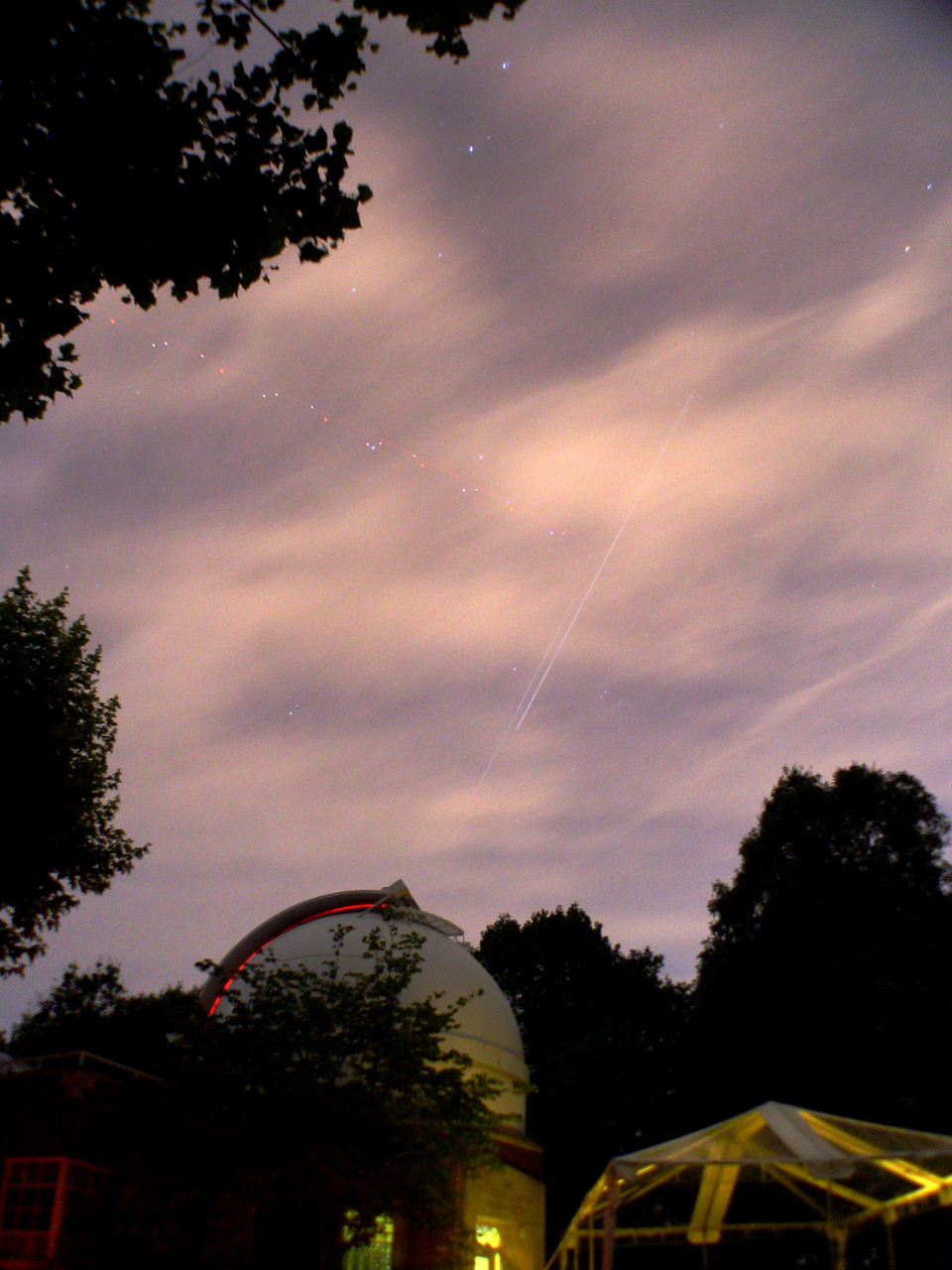It seems like only yesterday that we would see a news segment about one of NASA’s famous space shuttles blasting off of the launchpad from Kennedy Space Center.
Believe it or not, it has been almost a decade since the flight of the last shuttle mission.
The image above was taken from Vanderbilt Dyer Observatory exactly 13 years ago today. Rising above the dogwoods in the foreground is Dyer Observatory’s Seyfert Telescope dome with its open shutter facing southwest. An eerie glow from the dome’s interior red lights, used to provide a small amount of illumination but preserve night vision, creeps out from under the shutter doors. Just right of image center are the International Space Station (ISS) and the Space Shuttle Atlantis, both of which show up as streaks as they pass overhead at an altitude of nearly 300 miles in this long-exposure photograph. Traveling about 17,500 mph, the two vehicles traveled 150 miles during the 30 seconds that the camera shutter was open. Atlantis, which appears as the fainter streak due to its smaller size, had docked with the ISS about a week earlier for mission STS-117, which, among other things, delivered a truss segment and a set of solar arrays. Atlantis undocked from the ISS a day prior to to this image and was set to return to Earth; however, inclement weather conditions at the landing site delayed the touchdown until June 22nd, making it the longest mission for Atlantis but still about four days shorter than Space Shuttle Columbia’s record 17.625-day STS-80 mission in 1996. STS-135, which also utilized Atlantis, was the final shuttle mission of the STS program, lifting off on July 8, 2011, and landing in Florida on July 20, 2011.
Six of the seven bright stars of the Big Dipper asterism are also visible toward the top of the image, and two of the Little Dipper’s stars just make it into the right side of the frame. A southbound airplane, shown by the red and white blinking lights that appear as distinct dots, just skirts the bowl of the Big Dipper. Can’t make out the Big Dipper? Click on the image to see an annotated image.
Photo by Dr. Billy Teets
<- Previous June 20, 2020 Next ->
Tucked up among the wooded hilltops of northern Brentwood, Vanderbilt Dyer Observatory is considered by many to be a hidden treasure of the area. Visitors to our satellite campus not only learn about some of the cutting-edge discoveries and science in astronomy but they also get a dose of nature, history, and many other things while here. Over the years, we at Dyer Observatory have made the preservation of our facility and grounds a key mission. Preservation not only entails things such as maintaining our telescopes — it also includes keeping a record of days passed. Since 1953, we have amassed a number of interesting images, pieces of equipment, and ephemera. Every day tends to bring new surprises. In continuing our tradition of public education and outreach, Stellar Finds regularly provides an image and description of the diverse paraphernalia associated with Vanderbilt Dyer Observatory and the history of astronomy at Vanderbilt University.
